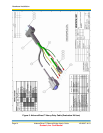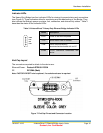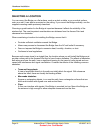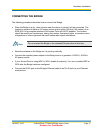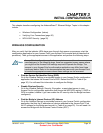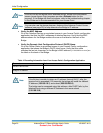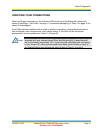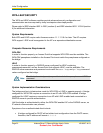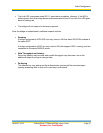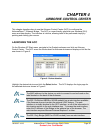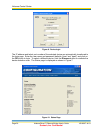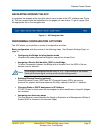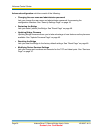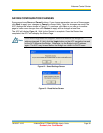
Initial Configuration
Page 22 AirborneDirect™ Ethernet Bridge User's Guide 100-8007-141G
Quatech, Inc. Confidential
WPA-LEAP SECURITY
The WPA and LEAP software modules provide advanced security configuration and
communication services required by today’s enterprise-class deployments.
Please refer to IEEE standard 802.1x 2001 (section 4) and IEEE standard 802.11i 2004 (section
4) for additional information.
System Requirements
Both WPA and LEAP require radio firmware version 1.1.1.111.8.4 or later. The AP requires
WPA support. LEAP must be supported in the AP or a separate authentication server.
Computer Resource Requirements
WPA-PSK
In order to function properly, an Access Point that supports WPA-PSK must be available. The
WPA-PSK passphrase installed on the Access Point must match the passphrase configured on
the bridge.
LEAP
In order to function properly, a RADIUS server configured for LEAP containing
usernames/passwords, and an Access Point that supports LEAP, must be available. The
RADIUS server username and password must match the user-leap and pw-leap command
values configured on the bridge.
Note:
The blank character (space) may not be included in a passphrase or LEAP
password.
System Implementation Considerations
The bridge must be in infrastructure mode for WPA-PSK or LEAP to operate properly. A bridge
configured for WPA-PSK requires a connection to an AP with WPA-PSK enabled. A bridge
configured for LEAP requires a connection to an AP with LEAP enabled and connected to a
RADIUS server to provide authentication.
Until the bridge is authenticated by either the WPA-PSK enabled AP or the RADIUS server, no
IP network communication can proceed.
Symptoms of an unauthenticated client include:
A bridge configured for DHCP will not obtain host configuration from the DHCP server;
therefore, the IP address will remain 0.0.0.0.



